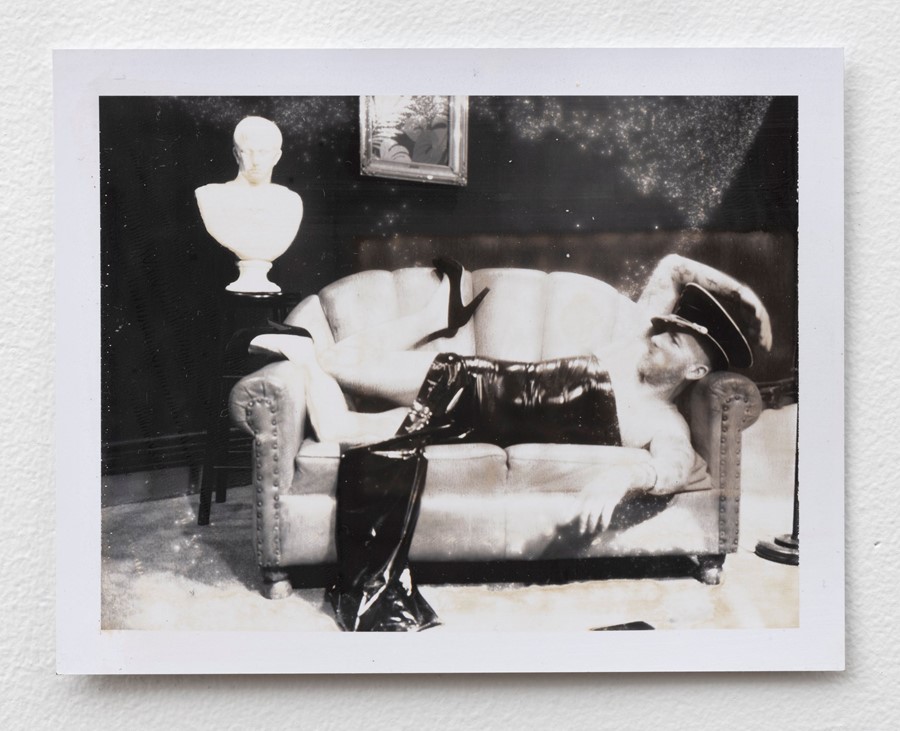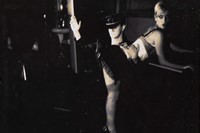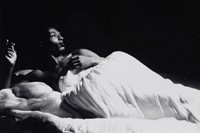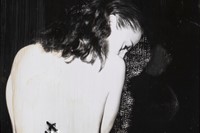As her new exhibition opens in New York, Gail Thacker talks about her decaying polaroids, which capture beloved downtown characters between 1994 and 2022
The use of Polaroids has traditionally been coupled with a need to accelerate time. Whether employed in a professional setting or for a social occasion, they provide immediacy and the ability to see a physical image quickly. In Gail Thacker’s work, however, borne from the same tools and similarly concerned with time’s passing, speed is not the hero feature.
Disrupting chemical processes and interfering with negatives even before her close friend, the photographer Mark Morrisroe, gifted her a box of Polaroid 665 Positive/Negative film in the late 80s, Thacker has since filled her photographs with the characters of her beloved downtown, centred in and around the Gene Frankel Theatre on New York’s Bond Street, of which she has been artistic director since 2005.
“It’s about them, my family, about them living forever through my photography,” says the artist, alluding to the Aids crisis that decimated and then reshaped whole pockets of the city’s queer community. Morrisroe, who Thacker first met at the start of the decade at Boston’s School of the Museum of Fine Arts, and who posed for Mark Morrisroe in Bed some months before (since acquired by the ICA in Boston), would die from Aids-related illness in 1989 at 30 years old; taking photos says Thacker, quickly became a kind of lifeboat.
The distinctive, experimental aesthetic of her practice is a consequence of locking away negatives for sometimes up to a year, allowing – or rather propelling – their decay, and subsequently reinterpreting the role of a photograph. “I am a creature of habit,” Thacker explains of her approach, “I do the same thing over and over.” With Gail Thacker’s Midnight Call at Candice Madey gallery, the artist brings together a selection of these portraits, made between 1994 and 2022.
Below, in her own words, Thacker reflects on the stories and attitudes that unfold through her work.
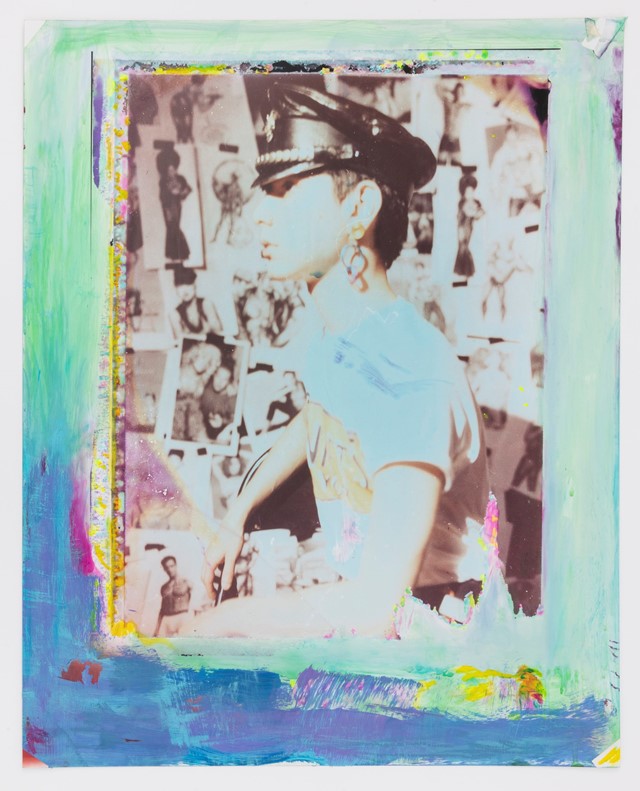
“I’m not a photographer, although I use a camera. In art school I’d brag that I was from the school of no technique – I didn’t follow the rules. I took one class on photography and learned to print. My friend always said, ‘You should follow your photography’ and I was like ‘no, I’m a painter. I make wood pieces.’ When I started using a Polaroid camera there was no F-stop, no reasoning. I’m not interested in lenses or whether it’s in focus, I’m interested in it finding its own journey; trying to find some kind of visual and metaphysical vocabulary.
“My work is about the investigation of errors. We’re all decaying, we’re all fighting against time. So let’s have fun. The technique I learned early on, before Mark [Morrisroe] died, was totally accidental. One day I wrapped my negatives, instead of rinsing them off, in plastic and put them in the closet. About a year went by and when I pulled them out they were stuck together. I didn’t get the most beautiful results, but it had this ‘touch of an artist’.
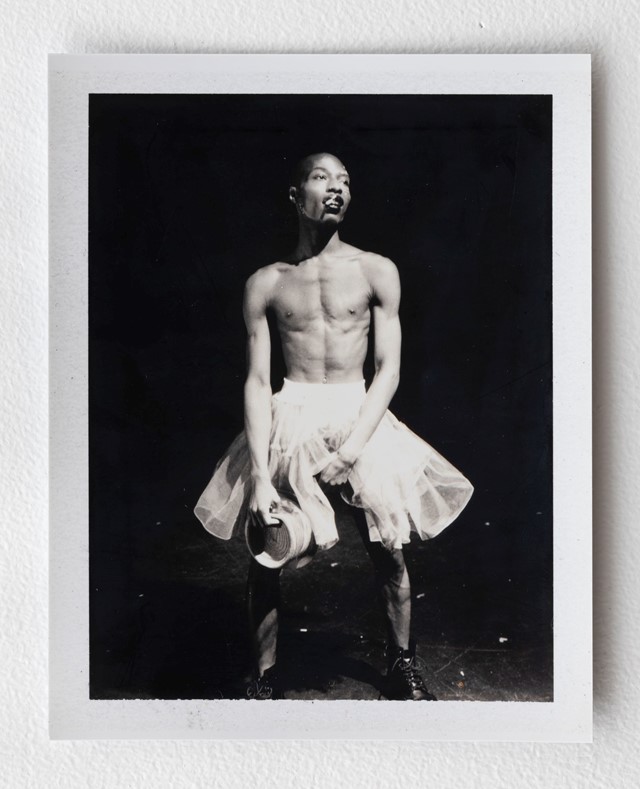
“During the Aids epidemic, everybody came out. It was a time of freedom, we were pouring gasoline on the fire, ‘We are queer, take it or leave it’. We didn’t do it to be political, we just did it to be us. The work came about organically, because we knew each other, things would blossom. The power of working with others is so rewarding if you find people you’re in tune with. Your idea is a seed, and I think of it like growing a plant. Anybody can pick from it and expand on it.
“I always work from emotions, I call it breathing life in. I’m firm believer in experiencing life and making mistakes. Mark and I would constantly try to outdo each other with risky behaviour, because it was important that the art was the actual living of life as well. Turning the camera on myself and my friends, as queer artists, I didn’t need to turn the camera anywhere else. Later for me and Rafael [Sánchez], taking photographs was like a lifeboat. In the middle of everything storming around us, we were safe. It was a little dance – let’s live while we can.
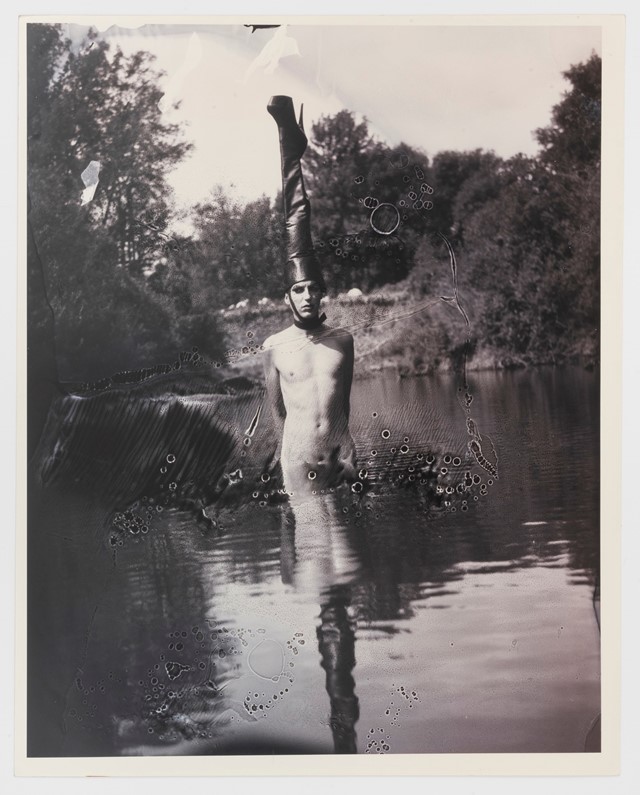
“The new show is Gail Thacker’s Midnight Call because I couldn’t think of a title. I’m on the phone till three in the morning – I do my photography late at night – and I call Rafael. He answers, ‘Gail Thacker’s midnight call’, and I was like ‘that’s the title!’. It was simple. That’s how everything is, it’s all accidental. Grab it from the universe, you know? It’s all there anyhow. None of us are original.”
Gail Thacker’s Midnight Call is on show at Candice Madey in New York until 9 December 2023.
